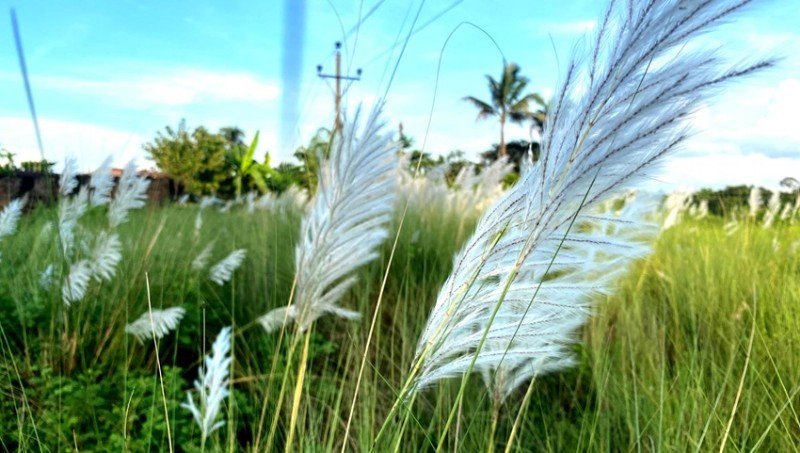
As autumn sweeps across the landscape, nature in Kamalganj of Moulvibazar puts on a breathtaking display of white kashful (Saccharum spontaneum).
Adorning roadsides, riverbanks and open fields, these feathery blooms signal the arrival of the season, embodying beauty, serenity and the poetic charm deeply rooted in Bengali culture.
For many, kashful is not just a sign of autumn; it’s a symbol of peace, purity and the aesthetic spirit of Bengal. Its soft, plume-like flowers dance in the breeze, creating a natural harmony that captivates people of all ages.
Though a type of wild grass, kashful holds a unique cultural and emotional value in the hearts of Bengalis.
In the Bengali calendar, autumn spans the months of Bhadra and Ashwin, following the relentless rains of monsoon and preceding the dry chill of Hemonto (late autumn).
Poets and writers often hail autumn as the “queen of seasons,” celebrating its unmatched elegance.
The skies clear, the sun shines brighter and the landscape transforms into a natural canvas; its brushstroke, the delicate whiteness of kashful.
While globally autumn is known as “fall” in North America, in Bangladesh it is part of the country’s unique six-season cycle, each marked by distinct characteristics; often revealed through the blooms it brings.
Kashful, which belongs to grass family, grows naturally across many parts of the country. Its slender, sharp-edged leaves contrast with the soft, pure-white plumes that resemble peacock feathers.
Traditionally, rural communities used the plant for fuel, making brooms, roofing and even for covering betel leaf farms.
In Kamalganj, however, areas like Shamshernagar, Adampur, Islampur, Madhabpur, Alinagar and even the outskirts of the municipality still offer glimpses of its serene beauty.
These wild grasslands go largely unnoticed until they burst into bloom, becoming sudden spectacles of natural art.
Locals and visitors alike are once again being drawn to these scenic Kashban (Kash gardens).
Shuvo and Sagar, two visitors to a kash field, said, “Though it looks like regular grass, the leaves are quite sharp. But the flowers; white as snow, look like peacock feathers. Once, it was widely used in village life for practical purposes. We hardly see that anymore.”
Ahmeduzzaman Alam and Rajan Abedin, also visiting the fields, added, “Kashful not only enhances autumn’s beauty but also has practical uses after it withers. The dried plumes are used for making brooms and other household items. This flower truly makes autumn unique; like a living painting on nature’s canvas. It whispers to us: ‘Autumn has arrived.’”
They emphasized the need for conservation, stating, “Kashful brings a sense of peace to the human soul. Once common, it’s now disappearing. It must be preserved.”
Speaking on the matter, Kamalganj Upazila Nirbahi Officer (UNO) Makhan Chandra Sutradhar noted, “The stunning display of Kashful along rivers, roads and open spaces across the upazila is truly mesmerizing. It’s a sight that brings joy to everyone.”
As modern development continues to shrink natural habitats, these fleeting seasonal displays become all the more precious. Kashful is more than just a flower; it’s a gentle reminder of nature’s rhythm and beauty in the heart of Bangladesh’s ever-changing seasons.
 Weekly Bangla Mirror | Bangla Mirror, Bangladeshi news in UK, bangla mirror news
Weekly Bangla Mirror | Bangla Mirror, Bangladeshi news in UK, bangla mirror news







